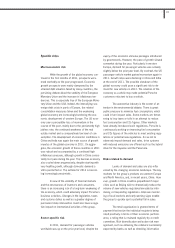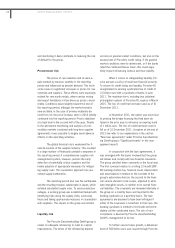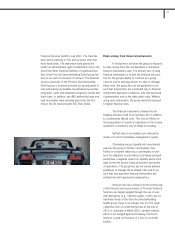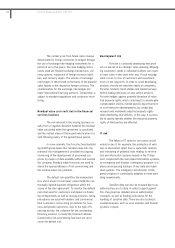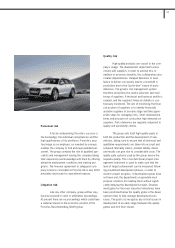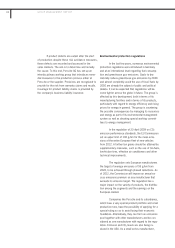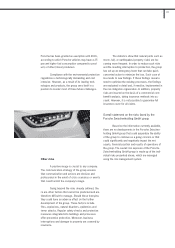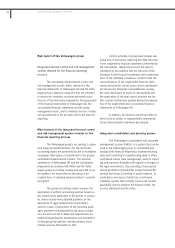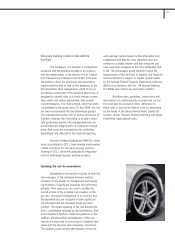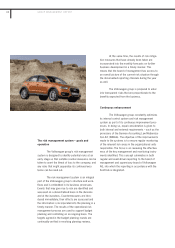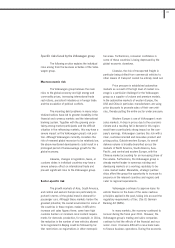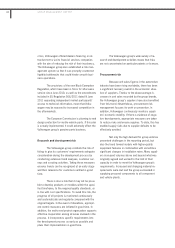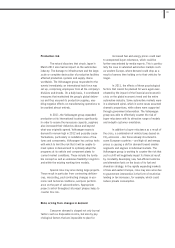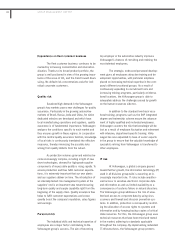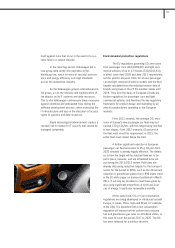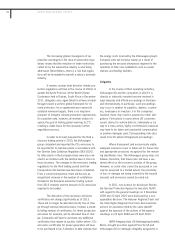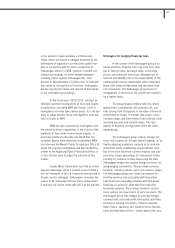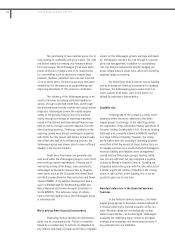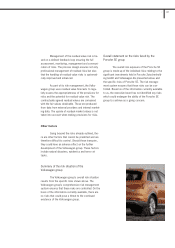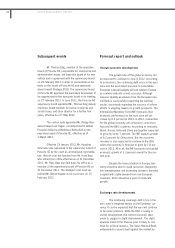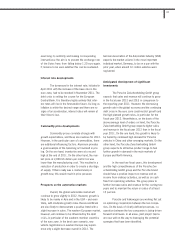Porsche 2011 Annual Report Download - page 119
Download and view the complete annual report
Please find page 119 of the 2011 Porsche annual report below. You can navigate through the pages in the report by either clicking on the pages listed below, or by using the keyword search tool below to find specific information within the annual report.
Specific risks faced by the Volkswagen group
The following section explains the individual
risks arising from the business activities of the Volks-
wagen group.
Macroeconomic risk
The Volkswagen group believes the main
risks to the global economy are high energy and
commodity prices, increasing international trade
restrictions, persistent imbalances in foreign trade
and the escalation of political conflicts.
The mounting debt problems in many indus-
trialized nations have led to greater instability in the
financial and currency markets and the international
banking system. Together with the growing uncer-
tainty among market participants and the difficult
situation in the refinancing markets, this may have a
severe impact on the Volkswagen group’s risk posi-
tion. Although Volkswagen currently considers the
risk of renewed global recession to be relatively low,
the above-mentioned developments could result in a
prolonged period of below-average growth for the
global economy.
Likewise, changes in legislation, taxes, or
customs duties in individual countries may have a
severe adverse effect on international trade and
present significant risks to the Volkswagen group.
Sector-specific risk
The growth markets of Asia, South America,
and central and eastern Europe are particularly im-
portant in terms of the global trend in demand for
passenger cars. Although these markets harbor the
greatest potential, the overall environment in some of
the countries in these regions makes it difficult to
increase unit sales figures there; some have high
customs barriers or minimum local content require-
ments for domestic production, for example. In China,
the reduction in the number of new vehicles allowed
to be registered in Beijing could be followed by fur-
ther restrictions on registrations in other metropoli-
tan areas. Furthermore, consumer confidence in
some of these countries is being depressed by the
global economic slowdown.
Likewise, the risk of transported freight in
particular being shifted from commercial vehicles to
other means of transport cannot be entirely ruled out.
Price pressure in established automotive
markets as a result of the high level of market cov-
erage is a particular challenge for the Volkswagen
group as a supplier of volume and premium models.
In the automotive markets of western Europe, the
USA and China in particular, manufacturers are using
price discounts to promote sales of their own vehi-
cles, thereby putting the entire sector under pressure.
Western Europe is one of Volkswagen’s main
sales markets. A drop in prices due to the economic
climate and a resulting fall in demand in this region
would have a particularly strong impact on the com-
pany’s earnings. Volkswagen counters this risk with a
clear, customer-oriented and innovative product and
pricing policy. Outside western Europe, its overall
delivery volume is broadly diversified across the
markets of North America, South America, Asia-
Pacific, and central and eastern Europe, with the
Chinese market accounting for an increasing share of
the volume. Furthermore, the Volkswagen group is
already market leader in numerous existing and
developing markets or is working resolutely to be-
come market leader. Meanwhile, strategic partner-
ships afford the group the opportunity to increase its
presence in the relevant countries and regions and
cater to regional requirements.
Volkswagen continues to approve loans for
vehicle finance on the basis of the same cautious
principles applied in the past, taking into account the
regulatory requirements of Sec. 25a (1) German
Banking Act (KWG).
In many markets, the economy continued to
recover during the fiscal year 2011. However, the
Volkswagen group's trading and sales companies
continue to feel the effects of the financial and eco-
nomic crisis: it remains difficult to raise bank loans
to finance business operations. During the economic
119
2


